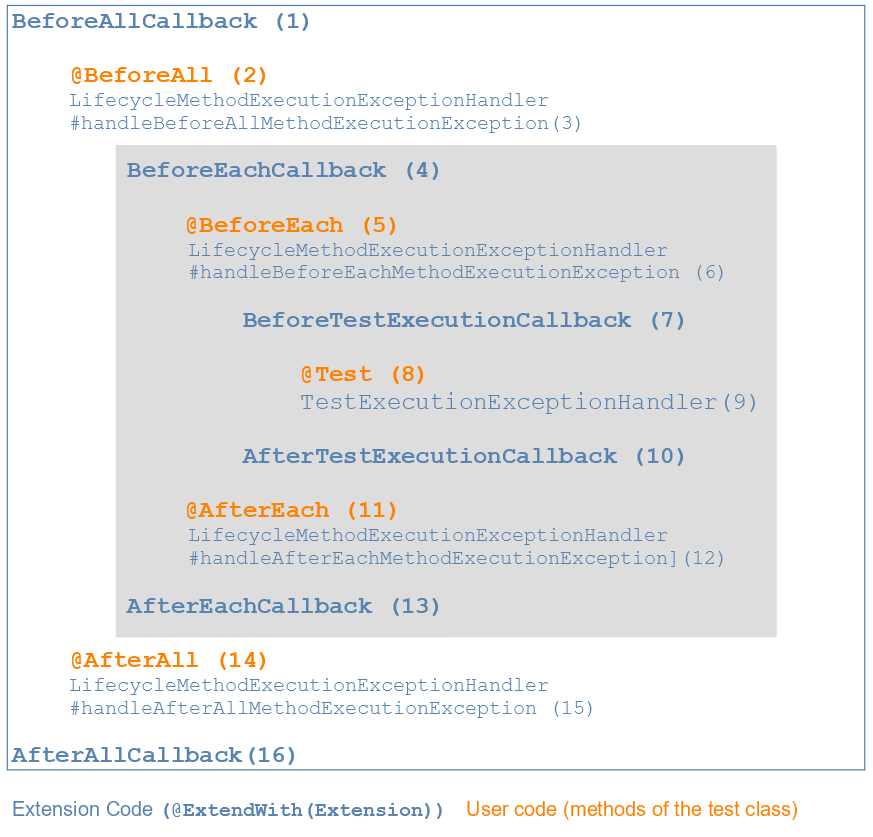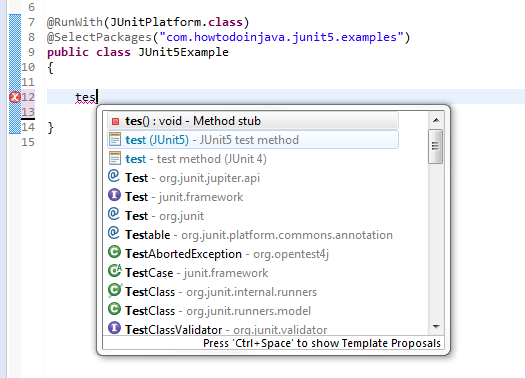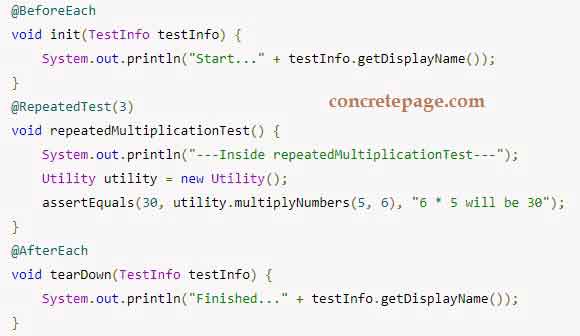

A JUnit test class can have one or more test methods. The Tag annotation can be used over classes and test methods. You can just create your own interface, give it a proper name that reflects what these annotations are all about, and then assign this annotation to your test, just like for the annotatedMethod2 in this example. The successful execution of your test class may depend on these activities, so JUnit provides two pairs of annotations to address this problem. Tagged tests represent a replacement for the JUnit 4 Categories. This is how you can create your own custom annotation in case you have too many annotations you want to add to your test method. So this is how we can prove that indeed, this annotation, this composed custom annotation, works properly.

If I'm going to run this test again, the one with the custom annotation attached to it, we will see that this method will now fail because one of the assigned annotations to this test doesn't allow the test to run more than 1 second, and our Thread.sleep actually made the test run with a higher duration than that. So I'm going to say I want to sleep for 3 seconds, but my test will only allow for 1 second to be the maximum time for running. Jupiter API introduced many new annotations in JUnit 5. Now, let's say I'm changing the Timeout to 1, and I want to add a Thread.sleep() here, just so we see that the annotation really works fine. In this post, we will briefly discuss some of the new annotations in JUnit 5 Jupiter API. To confirm that the behavior is going to be exactly the same, I will run the test again, and we will see that the test ran successfully. So this is the one that I created earlier.īy navigating to it with "Ctrl" and click, we can see what the annotation is all about, so we can see what are all the annotations that it will replace. Instead of adding all of those tags that we had before, like and so on, I will just add the annotation. Junit-jupiter-API Jupiter.api, Used for developing test cases, To enable or disable tests in JUnit Jupiter which are annotation based.

In order to have a test here that will pass or fail - first of all, I will create a System.out which says, "This is the test with the timeout." In case 5 seconds are exceeded, we will see a failure.

Instead, I will remove the time unit value from the "Timeout" annotation, and I will just say that I want my test to run no longer than 5 seconds. However, for this example, I don't want to create a test that runs for minutes just so we can see how this feature works. and we can pick from these available options.Īs you can see, we could specify hours, milliseconds, and so on, but we could also say, minutes here. We will set the maximum duration allowed for a test with a new annotation called and for this annotation, we can either provide directly a value - for example, 5, which means we want the timeout to be of 5 seconds - or we can also specify what time unit we want to use.įor example, if we want to use minutes instead of seconds, we can just choose to say TimeUnit. What we want with the timeout is in case a test runs way too long, we want to fail it. Here, I will create a first test method - it will be a simple method, and here, we will demonstrate the timeout feature. These will be setting a timeout on a test, creating nested tests, and also creating our own custom annotation.Īs usual, I will create a new test class to put the tests for this chapter, and I will just create a class called, MiscTest. The extension finds all fields that are annotated with Container and calls their. The JUnit 5 extension model allows users to provide custom annotations and behaviors for test. However, the RunWith annotation can still be used in JUnit 5 for the sake of backward compatibility. In JUnit 5, the RunWith annotation has been replaced by the more powerful ExtendWith annotation. JUnit 5 has an extension model that supports Mockito out-of-the-box. In this quick tutorial, well discuss the use of the RunWith annotation in the JUnit 5 framework.
Junit 5 annotations how to#
It shows how to add a mock object to a test case and verify its behavior with JUnit 5. In this chapter, I will briefly go over three features that we can use from JUnit 5. Jupiter integration is provided by means of the Testcontainers annotation. This section of the JUnit 5 Mockito tutorial is devoted to the usage of Mockito with JUnit 5.


 0 kommentar(er)
0 kommentar(er)
